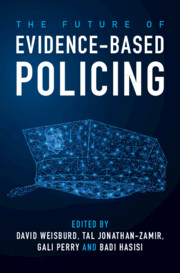Book contents
- The Future of Evidence-Based Policing
- The Future of Evidence-Based Policing
- Copyright page
- Contents
- Figures
- Tables
- Contributors
- Editors
- 1 The Future of Evidence-Based Policing
- Part I Taking Stock of Evidence-Based Policing
- Part II The Evidence for Evidence-Based Policing
- Part III Innovations in Tools of Evaluation and Assessment
- Part IV Challenges to the Implementation of Evidence-Based Policing
- 10 Practitioners’ Inclination to Rely on Experience
- 11 Implementing Evidence-Based Policing
- 12 Towards Implementing Evidence-Based Policing
- 13 Evidence-Based Policing and the Law
- Part V The Practitioner’s Perspective
- 17 Conclusions
- Index
- References
10 - Practitioners’ Inclination to Rely on Experience
What Does This Mean for Evidence-Based Policing?
from Part IV - Challenges to the Implementation of Evidence-Based Policing
Published online by Cambridge University Press: 01 June 2023
- The Future of Evidence-Based Policing
- The Future of Evidence-Based Policing
- Copyright page
- Contents
- Figures
- Tables
- Contributors
- Editors
- 1 The Future of Evidence-Based Policing
- Part I Taking Stock of Evidence-Based Policing
- Part II The Evidence for Evidence-Based Policing
- Part III Innovations in Tools of Evaluation and Assessment
- Part IV Challenges to the Implementation of Evidence-Based Policing
- 10 Practitioners’ Inclination to Rely on Experience
- 11 Implementing Evidence-Based Policing
- 12 Towards Implementing Evidence-Based Policing
- 13 Evidence-Based Policing and the Law
- Part V The Practitioner’s Perspective
- 17 Conclusions
- Index
- References
Summary
For the last two decades, proponents of evidence-based policing (EBP) have worked diligently to convince police of the benefits of science and make research evidence clear, accessible, and relevant to real-world policing. In doing so, they were aware of a major obstacle: police officers tend to rely on experience, not science, when making decisions. However, policing scholars have paid little attention to the generality of this phenomenon or to the psychological mechanisms at its root. The implications for the future of EBP have also rarely been discussed. In this chapter we review the psychological processes behind practitioners’ preference for experience over science as the basis for decision-making, and empirical studies demonstrating this tendency in policing. Given this literature, we argue that attempts to rationally convince police to abandon their intuitive reliance on experience are unlikely to be successful. We speculate on the implications for the future implementation of EBP, and raise two main suggestions: 1) incorporate scientifically sound practices into police officers’ experience, particularly through training; 2) treat both science and experience as necessary components in successful policing, and begin investigating what their exact roles should be.
Keywords
- Type
- Chapter
- Information
- The Future of Evidence-Based Policing , pp. 193 - 210Publisher: Cambridge University PressPrint publication year: 2023
References
- 3
- Cited by

